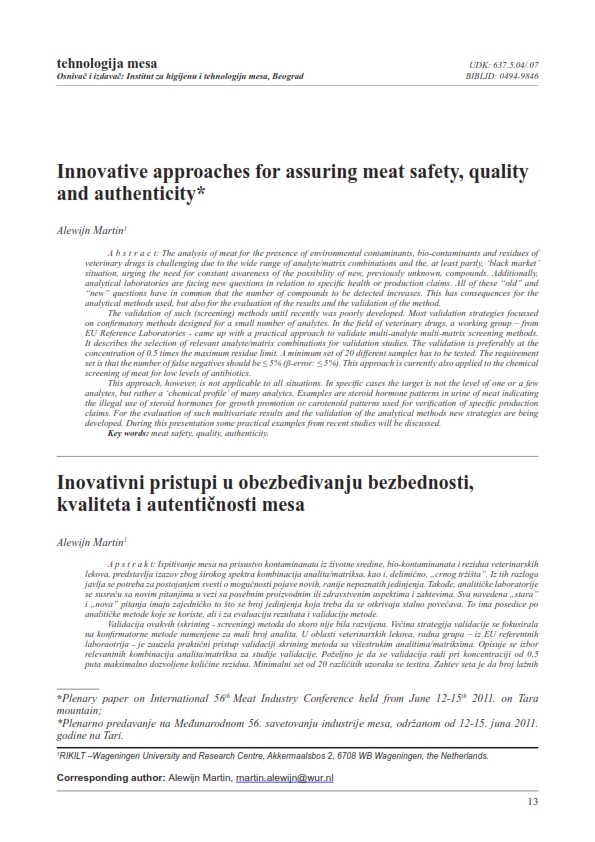Innovative approaches for assuring meat safety, quality and authenticity
Abstract
The analysis of meat for the presence of environmental contaminants, bio-contaminants and residues of veterinary drugs is challenging due to the wide range of analyte/matrix combinations and the, at least partly, ‘black market’ situation, urging the need for constant awareness of the possibility of new, previously unknown, compounds. Additionally, analytical laboratories are facing new questions in relation to specific health or production claims. All of these “old” and “new” questions have in common that the number of compounds to be detected increases. This has consequences for the analytical methods used, but also for the evaluation of the results and the validation of the method. The validation of such (screening) methods until recently was poorly developed. Most validation strategies focussed on confirmatory methods designed for a small number of analytes. In the field of veterinary drugs, a working group – from EU Reference Laboratories - came up with a practical approach to validate multi-analyte multi-matrix screening methods. It describes the selection of relevant analyte/matrix combinations for validation studies. The validation is preferably at the concentration of 0.5 times the maximum residue limit. A minimum set of 20 different samples has to be tested. The requirement set is that the number of false negatives should be ≤ 5% (β-error: ≤ 5%). This approach is currently also applied to the chemical
screening of meat for low levels of antibiotics. This approach, however, is not applicable to all situations. In specific cases the target is not the level of one or a few analytes, but rather a ‘chemical profile’ of many analytes. Examples are steroid hormone patterns in urine of meat indicating the illegal use of steroid hormones for growth promotion or carotenoid patterns used for verification of specific production
claims. For the evaluation of such multivariate results and the validation of the analytical methods new strategies are being developed. During this presentation some practical examples from recent studies will be discussed.





